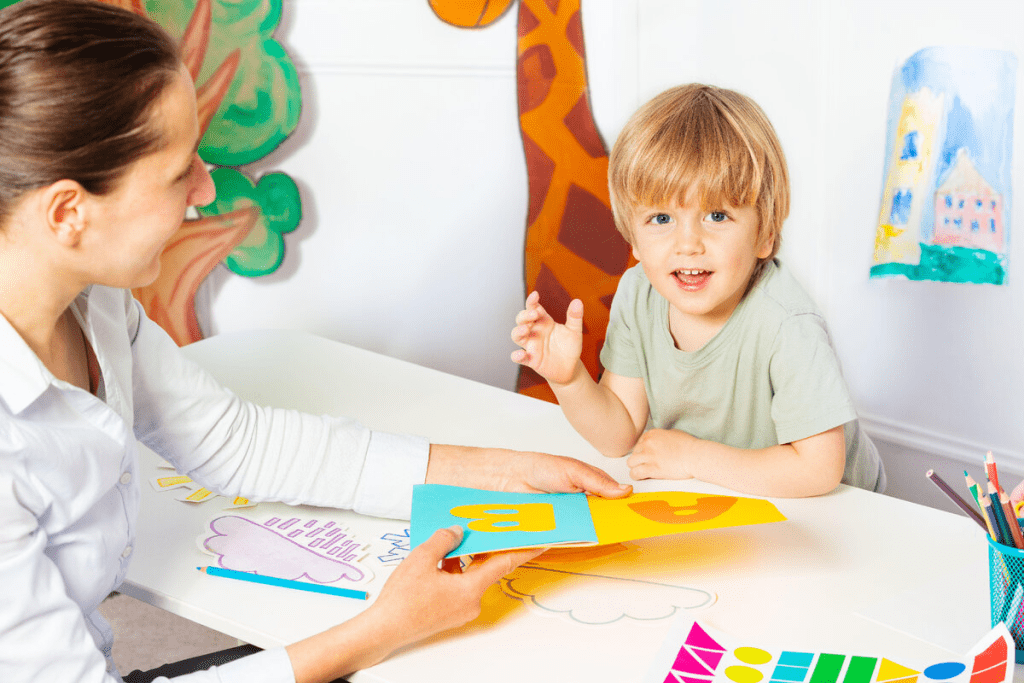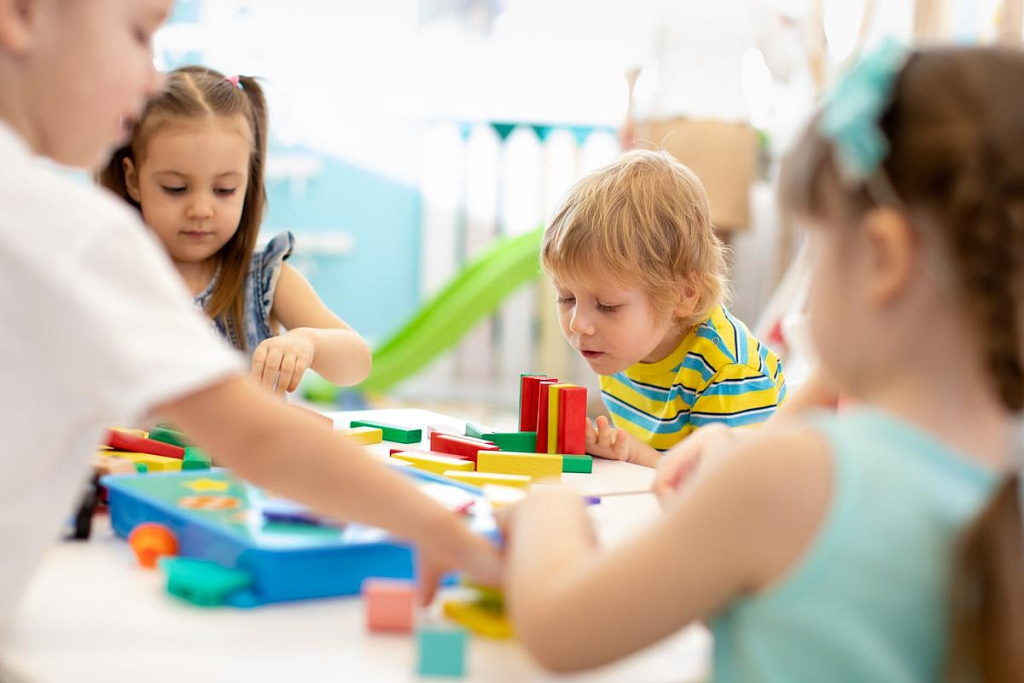Last Updated on October 21, 2025 by mcelik

Knowing about child development is key for parents, caregivers, and doctors. The five main areas”physical, cognitive, language, social, and emotional”are the base for a child’s lifelong health and happiness.
Child development is a complex process with many parts. These areas work together, setting the stage for a child’s future well-being and success.
A child’s growth in five key areas shapes their future. Early development is key for long-term success. These areas are connected and vital for growth.
The developmental domains – physical, cognitive, language, social, and emotional – are the base of a child’s development. Each area is important for success in life. Knowing these domains helps us support children’s growth and build a strong foundation for their future.
Early childhood development is complex, with many factors at play. The domains of development work together. For example, better physical skills help with learning and exploring.
Childhood traits like curiosity and resilience come from their experiences. A supportive environment that nurtures all five domains helps children grow. This approach is key to a strong start in life.
The importance of the developmental domain cannot be overstated. Childhood sets the stage for future success. By focusing on these five areas, we ensure children get the support they need to become capable and confident.

As children grow, knowing their developmental milestones is key. These milestones show how well a child is doing in areas like physical, cognitive, language, and social-emotional skills. Recognizing these helps us support their growth.
Developmental milestones are important signs of a child’s progress. They help us spot if a child might be falling behind. For example, physical developmental milestones include crawling and walking. Cognitive developmental milestones are about solving problems and remembering things.
It’s important to watch these milestones. This way, we can help early if a child is not doing well. Early help can really make a difference in a child’s future.
The different developmental areas work together. For instance, better cognitive development helps with language development. It makes it easier to talk and understand others. Social-emotional development is also linked, helping kids make good friends and relationships.
Knowing how these areas connect is key to helping kids fully develop. We can create support plans that cover all these areas. This way, we help kids grow more completely.
Looking into childhood development, we see that each stage is unique. Understanding these stages helps us support kids as they grow.

Physical development in early childhood is key to a child’s growth. It includes both gross and fine motor skills. As kids grow, they move from simple to complex actions, setting the stage for future physical abilities.
Children hit many milestones in physical development, mainly in gross motor skills. These skills use the big muscles for actions like walking, running, and jumping.
Gross motor development is vital in early childhood. By 18 months, most kids can walk on their own. Other important milestones include:
These milestones show physical growth and are key for more complex movements and sports skills later.
Fine motor skills are just as important. They involve the small muscles in the hands and fingers. These skills help with tasks like grasping, drawing, and writing.
Some key fine motor milestones include:
Hand-eye coordination is linked with fine motor skills. It helps kids do tasks that need visual and physical coordination.
Supporting Physical Development: Caregivers can help by creating a safe space for kids to practice their motor skills. Activities like outdoor play, dancing, and ball games boost both gross and fine motor skills.
Cognitive skills are key for kids to think, learn, and grow. These skills include problem-solving, memory, and early reading and writing. They are vital for success in school.
As kids get older, they learn to solve problems better. This skill is important for thinking critically. They start with simple tasks and get better at harder ones.
For example, a child might figure out a puzzle by trying different pieces. Later, they use smarter strategies, like looking at the shape and colour of the pieces. This shows they’re getting better at thinking critically.
Memory is a big part of cognitive development. Kids get better at remembering things as they grow. This is because their brains get stronger and they learn new ways to remember.
Young kids might remember simple things like songs or routines. Older kids can remember more complex stuff, like stories or history. Better memory helps them learn and do well in school.
Skills in numbers and reading, and writing are very important. They help kids do well in school. Numeracy is about numbers and math, and literacy is about reading and writing.
These skills work together. Knowing numbers helps with harder math later. Reading and writing early helps with learning in many subjects.
As children grow, their language skills improve quickly. This is key to their development. By age 6, most kids have four times as many words as they did at 2.
This time is important for building strong communication skills later on.
Receptive language means understanding what others say. Kids start learning this early. By 2, many can understand many words and simple sentences.
Understanding language is a basic part of growing up. Kids start with simple words and then learn more complex sentences. Their surroundings and the language they hear help them grow.
Expressive language lets kids talk, write, or gesture. As they get older, they can share their thoughts and feelings better.
Expressive language gets better as kids understand more. They start using more words and making more complex sentences.
Between 2 and 6, kids learn a lot of new words. This is a time of fast language growth, with kids learning new words every day.
Learning more words is very important. By 6, kids can talk more clearly. Things like where they live, their family’s income, and who they talk to help them learn words.
Children’s social growth is shaped by their interactions with others. This includes both peers and adults. It helps them learn to handle complex social situations. We will look at how peer relationships and social skills are important for their future.
Peer relationships are key in a child’s social growth. They offer chances to learn and practice important social skills. Social competence grows from these interactions, helping kids make and keep good relationships.
Some important parts of peer relationships and social skills are:
Studies show that kids with strong social skills by kindergarten are 1.5 times more likely to complete college. This shows how early social development is key for future success.
The social skills kids learn early on have a big impact later on. Kids with strong social skills do better in school, have better mental health, and form healthier relationships as adults.
Some long-term benefits of early social skills are:
By understanding the importance of social development, we can support kids in building strong social skills. This helps them lay a solid foundation for future success.
Emotional development is key for a child’s growth. It helps them understand and manage their feelings. This skill is vital for their well-being and how they interact with others.
Self-regulation means controlling one’s emotions and actions. It’s essential for a child’s emotional growth. Children who learn to control themselves early on tend to do better in life.
We can help kids develop self-regulation. We can teach them to breathe deeply, count, or talk about their feelings. This helps them manage their emotions better.
Emotional control is closely related to self-regulation. It’s about handling one’s emotions in different situations. By learning to control their emotions, kids can handle social situations better and make smarter choices.
Emotional intelligence is about knowing and understanding emotions in oneself and others. It guides our thoughts and actions. Teaching kids to recognize their feelings, empathize with others, and communicate well is key to building emotional intelligence.
To boost emotional intelligence, we can model healthy emotional expression. We should encourage kids to identify their feelings and engage in activities that promote empathy. This way, we help them form deeper connections and improve their well-being.
Supporting children in their emotional development is a journey. It requires patience, understanding, and guidance. By focusing on self-regulation, emotional control, and emotional intelligence, we lay a strong foundation for their future success and well-being.
Supporting complete child development is key to helping kids reach their highest level. It covers many areas like physical, cognitive, language, social, and emotional growth.
Helping a child grow means supporting all parts of their development. Knowing the five main areas and providing the right support helps kids succeed. It sets them up for a lifetime of well-being and success.
We, as caregivers and healthcare workers, are very important. We help create a space where kids can grow fully. By taking a complete approach, we help kids do well and reach their goals. This makes our society healthier and stronger.
Child development covers five key areas. These are physical, cognitive, language and communication, social, and emotional development. Each area is connected and helps a child grow and succeed.
Knowing about child development helps parents and caregivers support kids. It ensures children reach their full abilities and sets them up for a happy, successful life.
Physical development is key in early childhood. It includes big and small muscle skills. Big muscles help with walking and running. Small muscles help with grasping and using the hands.
Cognitive development is vital for learning and solving problems. It helps kids think and learn. These skills are important for doing well in school and solving challenges.
Many things affect how kids learn language. This includes listening, speaking, and growing their vocabulary. Knowing these helps parents support their child’s language growth.
Social and emotional skills are essential for kids. They help kids make friends and understand their feelings. These skills are key to a happy and healthy life.
Self-regulation and emotional control are vital for managing feelings. They help kids handle tough situations well. Teaching kids to recognize and accept their emotions is important.
Developmental areas work together and affect each other. For example, thinking skills can help with language. Social skills can help with emotional control. Progress in one area often helps in others.
Milestones change as kids grow. They include walking, talking, and solving problems. Knowing these helps parents support their child’s growth at each stage.
Subscribe to our e-newsletter to stay informed about the latest innovations in the world of health and exclusive offers!